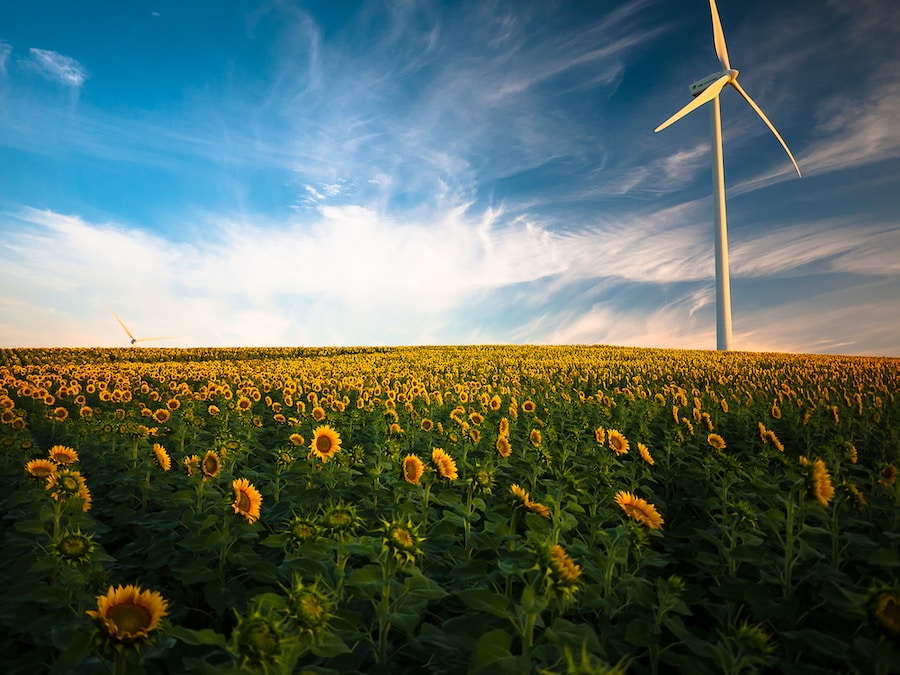<!-
- wp:paragraph –>
Wind is the movement of air caused by pressure differences in the Earth’s atmosphere. It plays a crucial role in shaping climate and weather patterns across the globe, influencing temperature, precipitation, and even storm systems.
What Causes Wind?
Wind is generated primarily by the uneven heating of the Earth’s surface by the sun. Key factors include:
- High and Low-Pressure Systems: Air moves from areas of high pressure to areas of low pressure, creating wind patterns.
- Coriolis Effect: The Earth’s rotation affects wind direction, causing winds in the Northern Hemisphere to curve to the right and those in the Southern Hemisphere to curve to the left. This effect is vital in shaping global wind patterns and weather systems.
Global Wind Patterns and Their Impact on Climate
Global wind patterns significantly influence climate zones:
- Trade Winds: These consistent winds near the equator affect tropical climates and drive ocean currents.
- Westerlies: Found in mid-latitudes, these winds influence temperate weather systems.
- Polar Easterlies: Cold winds near the poles affect polar and subpolar climates.
These patterns contribute to heat and moisture distribution globally, impacting various climate zones[3][5][6].
Wind and Temperature Regulation
Wind plays a vital role in regulating temperatures:
- Heat Redistribution: Winds transport warm air from the equator toward the poles and cold air from the poles toward the equator.
- Ocean Currents: Wind-driven currents like the Gulf Stream carry warm water to colder regions, moderating coastal climates. For instance, westerly winds bring warm, moist air from the Atlantic Ocean to Western Europe, resulting in milder climates compared to other regions at similar latitudes.
Wind’s Role in Precipitation and Storms
Winds are crucial for precipitation patterns:
- Moisture Transport: Winds carry moisture from oceans to land, significantly influencing rainfall distribution.
- Storm Systems: Winds contribute to storm formation by moving warm, moist air into low-pressure areas. Examples include tropical cyclones and monsoons.
Local Winds and Microclimates
Local winds can create unique microclimates:
- Sea Breezes and Land Breezes: These coastal winds affect local temperatures and weather conditions.
- Mountain and Valley Winds: In mountainous regions, these winds create distinct microclimates that influence temperature and precipitation.
- Foehn and Chinook Winds: Warm, dry winds that can rapidly alter temperatures by melting snow and affecting regional climates.
Wind’s Role in Climate Extremes
Wind can exacerbate climate extremes:
- Drought and Desertification: Persistent winds can lead to arid conditions by preventing moisture accumulation.
- Wind Chill: In colder climates, strong winds can make temperatures feel much colder, impacting both human comfort and wildlife.
- Dust Storms and Wind Erosion: In arid regions, strong winds can lead to dust storms that degrade air quality and contribute to soil erosion.
Climate Change and Wind Patterns
Climate change is altering global wind patterns:
- Changes in temperature gradients are affecting jet streams, leading to shifts in weather systems.
- Altered wind-driven ocean currents may impact regional climates by changing rainfall patterns and temperatures.
Understanding these changes is crucial for predicting future climate scenarios.
Frequently Asked Questions (FAQs)
Q1: How do winds affect temperature in coastal areas?
Winds transport warm or cold air masses, significantly influencing local temperatures.
Q2: Why are deserts often found in regions with consistent winds?
Persistent winds can inhibit moisture accumulation, leading to arid conditions typical of deserts.
Q3: How does wind contribute to storm formation?
Winds transport warm, moist air into low-pressure areas, facilitating storm development.
Q4: Can wind patterns change due to global warming?
Yes, climate change is causing shifts in existing wind systems with significant implications for weather patterns.
Q5: What are the differences between global wind patterns and local winds?
Global wind patterns are large-scale movements influenced by Earth’s rotation and heating, while local winds are smaller-scale phenomena affected by geographical features like mountains or bodies of water.
Conclusion
Wind plays an essential role in distributing heat, moisture, and influencing global weather systems. Its impact on climate zones shapes ecosystems worldwide. Understanding wind dynamics is crucial for grasping global climate changes and their implications for our planet.

Kyle Whyte is a notable scholar and professor at the University of Michigan, holding positions such as the George Willis Pack Professor in the School for Environment and Sustainability and Professor of Philosophy. Specializing in environmental justice, his work critically examines climate policy and Indigenous peoples’ ethics, emphasizing the nexus between cooperative scientific endeavors and Indigenous justice. As an enrolled Citizen Potawatomi Nation member, he brings a vital perspective to his roles as a U.S. Science Envoy and member of the White House Environmental Justice Advisory Council. His influential research is supported by various prestigious organizations including the National Science Foundation, and disseminated through publications in high-impact journals. Kyle actively contributes to global Indigenous research methodologies and education, with affiliations to numerous institutes and societies dedicated to traditional knowledge and sustainability. Recognized for his academic and community engagement, Kyle has earned multiple awards and served in various visiting professorships. His efforts extend to leadership positions on boards and committees focused on environmental justice nationwide.
